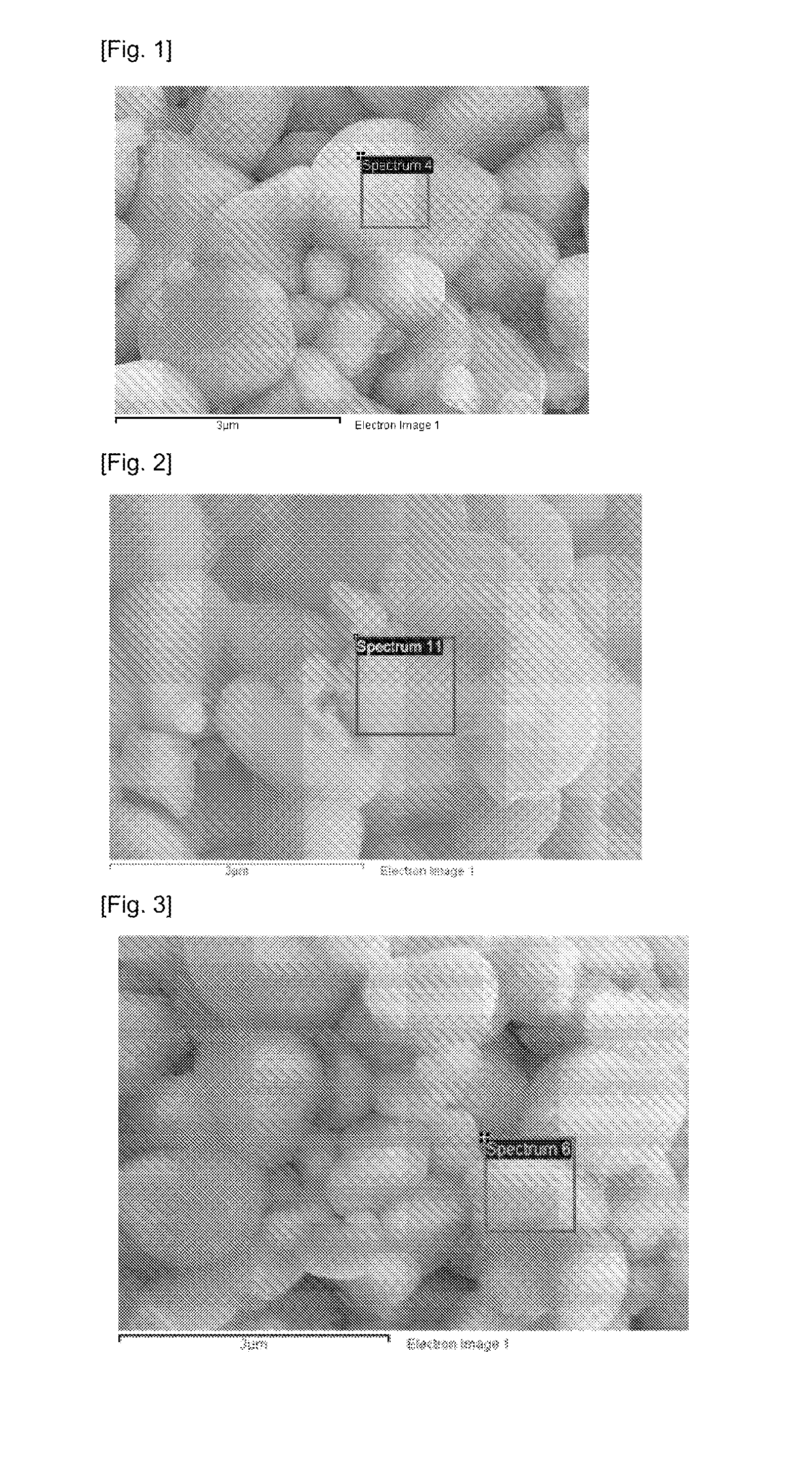Cathode active material coating solution for secondary battery and method of manufacturing the same
- Summary
- Abstract
- Description
- Claims
- Application Information
AI Technical Summary
Benefits of technology
Problems solved by technology
Method used
Image
Examples
example 1
Preparation of Cathode Active Material Coating Solution
[0057]20 g of aluminum acetate (Al(C2H3O2)3) and 20 g of citric acid (C6H8O7) were dispersed in 200 g of an ethylene glycol (C2H6O2) solution and then stirred to prepare a mixed solution. The mixed solution was primarily heated with stirring at a temperature of 141° C. for 5 hours and then secondarily heated at a temperature of 180° C. for 1 hour until the mixed solution was concentrated (about 1,000 cps) to manufacture a cathode active material coating solution (1) including metal organo-compounds represented by the following Chemical Formulae 1a and 2a as main components.
Al(C2H5O2)3 [Chemical Formula 1a]
Al(C6H5O7) [Chemical Formula 2a]
example 2
Preparation of Cathode Active Material Coating Solution
[0058]40 g of zirconium nitride (ZrN) and 10 g of citric acid (C6H8O7) were dispersed in 200 g of an ethylene glycol (C2H6O2) solution and then stirred to prepare a mixed solution. The mixed solution was primarily heated with stirring at a temperature of 150° C. for 5 hours and then secondarily heated at a temperature of 180° C. for 1 hour until the mixed solution was concentrated (about 1,000 cps) to manufacture a cathode active material coating solution (2) including metal organo-compounds represented by the following Chemical Formulae 1b and 3a as main components.
Zr(C2H5O2)4 [Chemical Formula 1b]
Zr(C6H5O7)(C2H5O2) [Chemical Formula 3a]
example 3
Preparation of Cathode Active Material Coating Solution
[0059]70 g of manganese acetate (Mn(CH3O2)2), 20 g of citric acid (C6H8O7), and 5 g of formaldehyde were dispersed in 400 g of an ethylene glycol (C2H6O2) solution and then stirred to prepare a mixed solution. The mixed solution was primarily heated with stirring at a temperature of 140° C. for 4 hours and then secondarily heated at a temperature of 180° C. for 1 hour until the mixed solution was concentrated (about 1,000 cps) to manufacture a cathode active material coating solution (3) including metal organo-compounds represented by the following Chemical Formulae 1c and 2c as main components.
Mn(C2H5O2)m [Chemical Formula 1c]
Mn(C6H5O7) [Chemical Formula 2c]
[0060](where m is an integer between 1 and 3.)
PUM
 Login to view more
Login to view more Abstract
Description
Claims
Application Information
 Login to view more
Login to view more - R&D Engineer
- R&D Manager
- IP Professional
- Industry Leading Data Capabilities
- Powerful AI technology
- Patent DNA Extraction
Browse by: Latest US Patents, China's latest patents, Technical Efficacy Thesaurus, Application Domain, Technology Topic.
© 2024 PatSnap. All rights reserved.Legal|Privacy policy|Modern Slavery Act Transparency Statement|Sitemap

